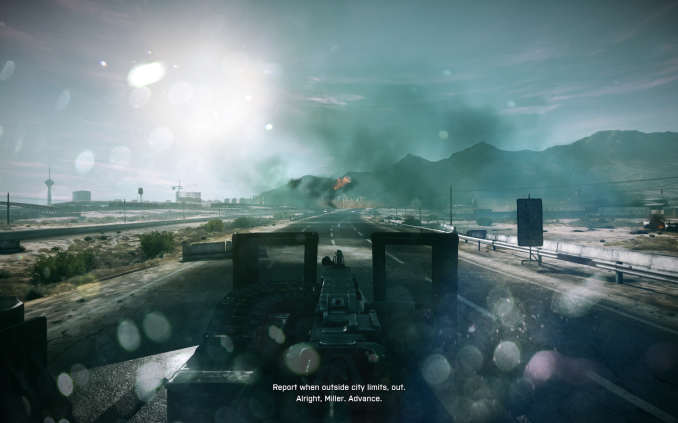Intel Iris Pro 5200 Graphics Review: Core i7-4950HQ Tested
by Anand Lal Shimpi on June 1, 2013 10:01 AM ESTImage Quality
Software compatibility and image quality remain understandable concerns, however Intel has improved tremendously in these areas over the past couple of years. I couldn't run Total War: Shogun 2 on Iris Pro, but other than that every other game I threw at the system ran without errors - a significant improvement over where things were not too long ago. On the compute side, I couldn't get our Folding@Home benchmark to work but otherwise everything else ran well.
On the image quality front I didn't see too much to be concerned about. I noticed some occasional texture flashing in Battlefield 3, but it was never something I was able to grab a screenshot of quickly enough. Intel seems pretty quick about addressing any issues that crop up and as a company it has considerably increased staffing/resources on the driver validation front.
The gallery below has a series of images taken from some of the benchmarks in our suite. I didn't notice any obvious differences between Intel and NVIDIA render quality. By virtue of experience and focus I expect software compatiblity, image quality and driver/hardware efficiency to be better on the NVIDIA side of the fence. At the same time, I have no reason to believe that Intel isn't serious about continuing to address those areas going forward. Intel as a company has gone from begging software developers to at least let their code run on Intel integrated graphics, to actively working with game developers to introduce new features and rendering techniques.

















177 Comments
View All Comments
whyso - Saturday, June 1, 2013 - link
They are completely different systems making power consumption values irrelevant.codedivine - Saturday, June 1, 2013 - link
Hi folks. Can you post the OpenCL extensions supported? You can use something like "GPU Caps viewer" from Geeks3d.tipoo - Saturday, June 1, 2013 - link
Interesting that the compute is punches above it's game performance weight. I wonder if they could put more EUs in a chip, maybe a larger eDRAM, and put it on a board as a compute card.lmcd - Saturday, June 1, 2013 - link
They already have a compute card called Xeon Phi if I remember correctly.Klimax - Sunday, June 2, 2013 - link
Different Arch (X86 in Phi)tipoo - Sunday, June 2, 2013 - link
I'm aware, but the Xeon Phi requires completely different programming than a GPU like this which can just use OpenCL.Soul_Master - Saturday, June 1, 2013 - link
What's your point for comparing desktop GPU with middle-range mobile GPU? CPU on both devices are not equal.Soul_Master - Saturday, June 1, 2013 - link
Sorry. I misunderstood about i7 4950HQ process, a high-end quad-core processor for laptops.Ryan Smith - Sunday, June 2, 2013 - link
It's what we had available. We wanted to test a DDR3 version of GK107, and that's what was on-hand.tipoo - Saturday, June 1, 2013 - link
Hmm, so it's heavily hinted at that the next rMBP will ditch discreet graphics. The 5200 is good, but that would still be a regression in performance. Not the first time Apple would have done that, there was the Radeon cut out of the Mini, the 320M to the 3000, even the bottom rung of the newest iMac with the 640m. I wonder if it would at least be cheaper to make up for it.